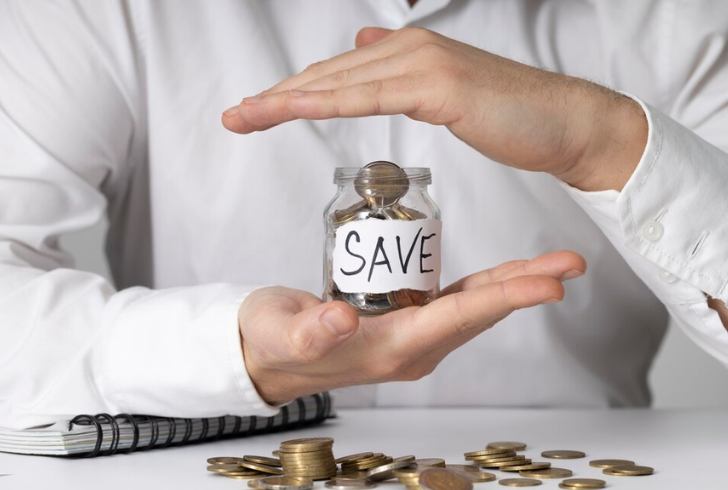Why You Need an Emergency Fund and How to Build One
Life often throws unexpected challenges our way, and many of these challenges come with a hefty price tag. Whether it’s a car accident, a sudden medical emergency, or an unexpected job loss, being unprepared for these situations can leave you scrambling financially. This is where an emergency fund steps in, acting as a financial cushion to absorb the impact of life’s unpredicted expenses.
In this guide, we’ll explore the importance of having an emergency fund, how much to save, and the best practices for building one.
Why You Need an Emergency Fund
Building an emergency fund is one of the most important steps toward achieving financial stability. Without it, small, unexpected events could derail your entire financial plan. A flat tire, a medical bill, or a surprise home repair may seem minor, but when there’s no savings to fall back on, these issues can quickly spiral into major problems.

Freepik | Be financially prepared for life’s uncertainties by setting aside funds for unexpected expenses.
The emergency fund isn’t a luxury—it’s a necessity. Think of it as a form of self-insurance. By setting money aside for unexpected expenses, you can reduce the financial stress that comes with life’s unpredictability. It’s not about having a large sum sitting idle; it’s about being prepared for the worst, so your finances don’t take a hit when life’s curveballs come your way.
How Much Should You Save in Your Emergency Fund?
There’s no one-size-fits-all answer to how much money should go into an emergency fund. Financial experts offer various suggestions depending on your situation. Some common recommendations include:
Three to six months of living expenses
Many experts recommend setting aside enough money to cover at least three to six months of basic living costs. This gives you a solid cushion in case of job loss or other long-term disruptions.
Start small and gradually build up
If saving three months of expenses feels overwhelming, start with a smaller amount, like $500 or $1,000. From there, you can build up over time as you get more comfortable with saving.
Consider your personal situation
If you have dependents or live in an area with higher living costs, you might need a larger emergency fund. Conversely, if you have a steady job and minimal expenses, a smaller fund might suffice.
Ultimately, the goal is to create a fund large enough to cover unexpected expenses without putting you in a financial bind. Knowing that you have that cushion can offer significant peace of mind during stressful situations.
Steps to Start Your Emergency Fund
Starting an emergency fund is simpler than you might think, but it requires consistency and discipline. Here are the steps to follow:
1. Choose the Right Account
You want your emergency fund to be accessible but not too easy to dip into. Consider opening a separate savings account specifically for your emergency fund, and choose an account that offers competitive interest rates. High-yield savings accounts or money market accounts are good options, as they allow your money to grow while keeping it safe and easily accessible.
2. Set Realistic Savings Goals
If you’re starting from scratch, it can be helpful to break down your savings goal into manageable chunks. For example, aim to save $100 or $200 each month until you reach your first milestone (e.g., $1,000). Once you have your initial savings in place, work toward building the fund up further.
3. Avoid Temptation
Having a large balance in your savings account can be tempting, but an emergency fund should only be used for actual emergencies. Resist the urge to use this money for non-essential purchases, even if you feel the temptation is strong. This fund is there to protect you in times of need, not to fund vacations or shopping sprees.
4. Automate Your Savings
One of the easiest ways to build your emergency fund without thinking about it is by automating your savings. Set up an automatic transfer from your checking account to your emergency fund every payday. This way, saving becomes a regular habit, and you won’t have to worry about forgetting to contribute.
5. Gradually Increase Your Savings
As you pay down debts and increase your income, try to increase the amount you contribute to your emergency fund. The more you save, the more secure you will feel in your financial situation.
When Should You Use Your Emergency Fund?

Freepik | Protect your wallet from unexpected car expenses by having an emergency fund.
The purpose of your emergency fund is to provide financial relief during unforeseen situations. But how do you determine what qualifies as an “emergency”?
Here’s what your emergency fund can cover:
1. Medical emergencies – Unexpected illnesses or injuries can result in costly medical bills. Your emergency fund can help you cover those costs.
2. Car repairs – Whether it’s a flat tire, an engine issue, or an accident, car repairs can be expensive. Your emergency fund should be able to handle these types of expenses.
3. Job loss or reduction in income – If you lose your job or experience a significant reduction in income, your emergency fund can help you pay bills while you look for new employment or make adjustments to your budget.
However, your emergency fund is not for:
1. Planned expenses – A vacation or buying a new phone doesn’t qualify as an emergency. Set aside separate savings for these kinds of purchases.
2. Non-essential upgrades – Your emergency fund is not a piggy bank for upgrading appliances or home decor.
The key to using your emergency fund wisely is to stick to your definition of “emergency.” When in doubt, ask yourself if the expense is necessary for survival or if it can wait until your finances are more stable.
Your Safety Net in Times of Need
Creating an emergency fund may seem challenging at first, but the peace of mind it provides is well worth the effort. Life is unpredictable, and having a financial buffer allows you to weather unexpected expenses without derailing your financial plans. By starting small, staying disciplined, and making your savings a priority, you’ll be able to create a safety net that can support you during tough times.
Remember, an emergency fund is an investment in your future financial well-being. The sooner you start building it, the more secure you’ll feel when life throws a curveball your way.